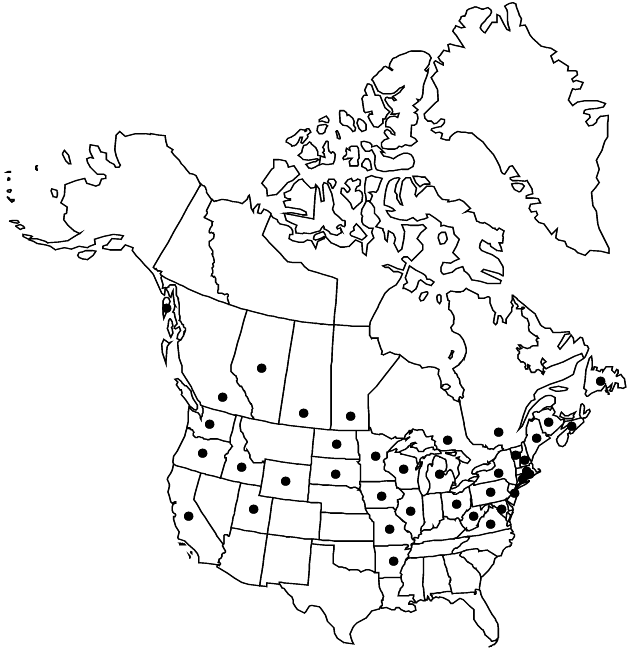Cota tinctoria
Fl. Sicul. Syn. 2: 867. 1845.
Common names: Golden marguerite yellow chamomile
IntroducedIllustrated
Basionym: Anthemis tinctoria Linnaeus Sp. Pl. 2: 896. 1753
Treatment appears in FNA Volume 19. Treatment on page 547.
Leaves 1–3 (–5) cm, ultimate lobes narrowly oblong to spatulate or linear, ultimate margins entire or serrate (teeth apiculate). Phyllaries: abaxial faces sericeous to arachnose, margins often ciliolate. Paleae 4–5 mm (including spinose tips). Ray laminae yellow, 6–12+ mm. Disc corollas 3.5–4 mm. Cypselae 1.8–2.2 mm; pappi usually 2–2.5 mm. 2n = 18.
Phenology: Flowering Jul–Sep.
Habitat: Disturbed sites, fields, roadsides
Elevation: 10–600+ m
Distribution

Introduced; Alta., B.C., Man., N.B., Nfld. and Labr. (Nfld.), N.S., Ont., Que., Sask., Alaska, Ark., Calif., Conn., Idaho, Ill., Iowa, Maine, Md., Mass., Mich., Minn., Mo., N.H., N.J., N.Y., N.Dak., Ohio, Oreg., Pa., R.I., S.Dak., Utah, Vt., Va., Wash., W.Va., Wis., Wyo., Europe, Asia
Discussion
Selected References
None.
Lower Taxa
None.
"broader" is not a number.
... more about "Cota tinctoria"
introrse +
connate +
truncate +
scarious +
ovate +
hirsute +
papillate +
absent +
continuous +
decurrent +
lobed;obovate;oblanceolate or spatulate +
stigmatic +
absent +
yellow +
absent +
lacking +
dimorphic +
1.8mm;2.2mm +
staminate +
Alta. +, B.C. +, Man. +, N.B. +, Nfld. and Labr. (Nfld.) +, N.S. +, Ont. +, Que. +, Sask. +, Alaska +, Ark. +, Calif. +, Conn. +, Idaho +, Ill. +, Iowa +, Maine +, Md. +, Mass. +, Mich. +, Minn. +, Mo. +, N.H. +, N.J. +, N.Y. +, N.Dak. +, Ohio +, Oreg. +, Pa. +, R.I. +, S.Dak. +, Utah +, Vt. +, Va. +, Wash. +, W.Va. +, Wis. +, Wyo. +, Europe + and Asia +
straight +
distinct +
proximal +
1;5 +
bisexual +
dispersed +
indeterminate +
Present +
true +
surrounding +
hemispheric +
oblong +
alternate +
cauline +
deltate +
ciliolate +
lobed +
scarious +
2-carpellate +
inferior +
attached +
anatropous +
cartilaginous +
persistent +
falling +
absent +
coroniform +
tough +
thick +
absent +
connate +
persistent +
distinct +
herbaceous +
falling +
unequal +
Fl. Sicul. Syn. +
1845 +
absent +
yellow +
paleate +
hemispheric +
absent +
fibrous +
exalbuminous +
modifed +
3;5 +
alternate +
branched +
2-branched +
glabrous +
papillate +
Cota tinctoria +
Cota +
species +
compressed +
narrowly oblong;spatulate or linear +
perennial +
